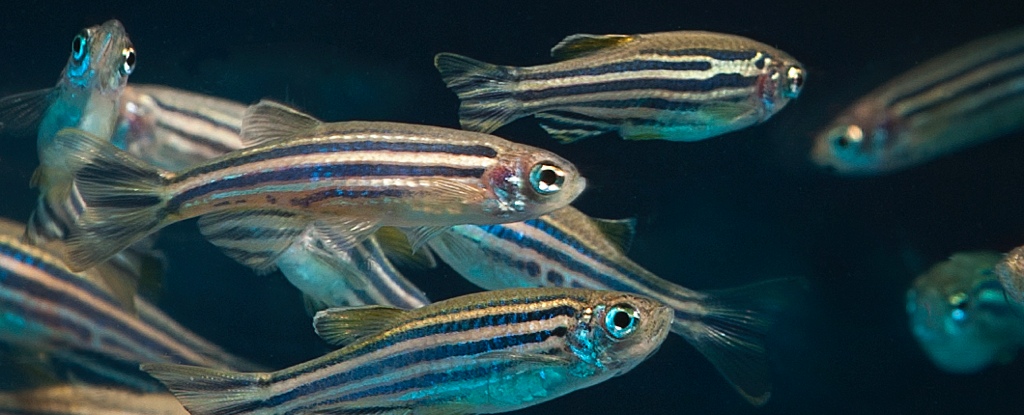Products You May Like
Some fish keep a close eye on the depths below while swimming, new research shows, for much the same reason we pay attention to where we’re putting our feet.
They aren’t taking steps, of course, but according to a new study, being biased to stimuli falling on the lower parts of the eye serves an important purpose for fish, helping them monitor their own motion in moving water.
To figure that out, researchers built a computational model that incorporates simulations of a zebrafish’s brain, native habitat, and swimming behavior.
Analysis of this model suggests constantly ‘looking down’ is an adaptive behavior for zebrafish, the researchers report. It may have evolved to help them stabilize themselves in a current.
Self-stabilizing can be hard in flowing water, and small fish often need to maneuver just to hold their position. This constant readjustment is informed partly by visual cues. If your background is moving, for example, it might be time to stabilize.
But those visual cues are tricky underwater. On land, we have lots of stationary objects like trees and buildings to help us gauge movement. Underwater, fish are surrounded by unreliable reference points, whose relative motion could be confusing.
“It’s similar to sitting on a train car that isn’t moving. If the train next to yours starts to pull to away from the station, it can trick you into thinking you are moving, too,” said lead author Emma Alexander, a computer scientist from Northwestern University.
“The visual cue from the other train is so strong that it overrides the fact that all of your other senses are telling you that you are sitting still. That’s exactly the same phenomenon that we are studying in fish. There are many misleading motion cues above them, but the most abundant and reliable signals are from the bottom of the river.”
The team studied zebrafish in the lab, using LEDs in their tanks to create moving patterns.
These fish don’t move their eyes to look around like we do. They don’t really need to, with their eyes already providing a sufficiently large field of vision. But they do start swimming when they see motion patterns below them, the study found.
“If you play a video with moving stripes, the fish will move along with the stripes,” Alexander said. “It’s like they are saying ‘wait for me!'”
The researchers also studied shallow streams in India where wild zebrafish live, since that scenery shaped the evolution of zebrafish behavior.
They placed 360-degree cameras in waterproof cases at seven streams, then remotely controlled a robotic arm to move the cameras, simulating the visual field of wild zebrafish.
“It allowed us to put our eyes where the fish eyes would be, so it’s seeing what the fish see,” Alexander said. “From the video data, we were able to model hypothetical scenarios where a simulated fish moved arbitrarily through a realistic environment.”
The researchers fed data from these experiments into algorithms for studying optic flow, or the apparent motion of scenery across the visual field. They found that, both in the lab and in the wild, zebrafish use information from their lower visual field to determine their motion.
“We tied everything together into a simulation that showed that, in fact, this is an adaptive behavior,” Alexander said.
This study focused on zebrafish, and while a similar model might apply to other shallow-water fish, we need more research to confirm that, Alexander explained to ScienceAlert. In other habitats this type of visual bias might not help at all.
“In deep ocean waters, a very different set of stimuli are available,” said Alexander, “and we expect this lower field bias would no longer be advantageous.”
Even in the same habitats, some fish may move or process visual information differently.
While this research is interesting, it could also have practical applications thanks to biomimicry, such as helping us develop better robots and artificial vision.
“If you were making a fish-inspired robot and you just looked at its anatomy, you might think ‘the eyes are pointing sideways, so I’m going to point my cameras sideways,'” Alexander said.
“But it turns out that the eyes are pointing sideways because they are balancing several tasks. We think they point sideways because it’s a compromise – they look upward to hunt and downward to swim.”
The study was published in Current Biology.
